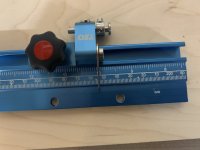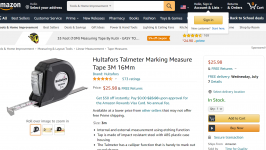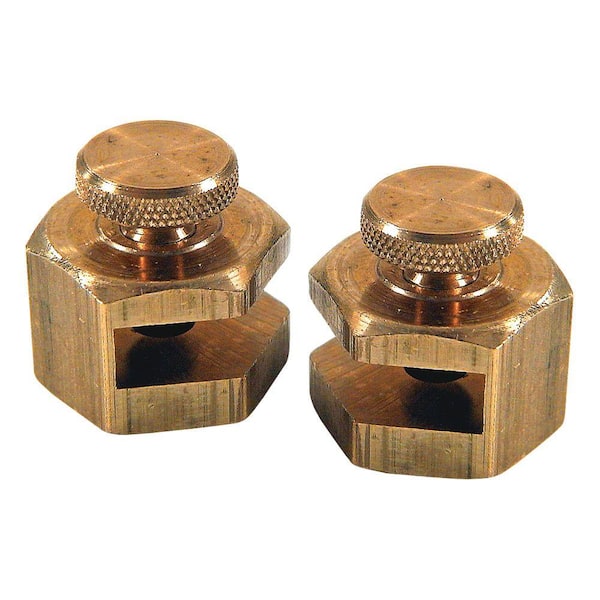I just recently became a happy owner of the TPG parallel guide system by TSO. The system is very well made and thought out, I think it's the best parallel guide solution out there.
However, my 30" tracks have an issue - the metric scale is approximately 1 mm off.
I calibrated both flipstops by following the manufacturer's instructions: set both stops at the 10" mark, then set my Woodpeckers adjustable square to 10 inches, firmly pressed it against the guide rail and secured the calibration rods against the end of the square.
Then I made a mark on my work piece at 545 mm using Fastcap's True32 tape measure and set the TGP guide at 545 mm. My mark was almost exactly 1 mm away from the guide rail.
I then used the same Woodpeckers square that I did not readjust and made a mark at 10 inches. Set the TGP guide to 10 inches and voila! It was spot on, precisely on my mark.
Did anyone else who owns this system noticed anything similar? Are metric and imperial scales a little off and I have to calibrate for the metric scale separately?
However, my 30" tracks have an issue - the metric scale is approximately 1 mm off.
I calibrated both flipstops by following the manufacturer's instructions: set both stops at the 10" mark, then set my Woodpeckers adjustable square to 10 inches, firmly pressed it against the guide rail and secured the calibration rods against the end of the square.
Then I made a mark on my work piece at 545 mm using Fastcap's True32 tape measure and set the TGP guide at 545 mm. My mark was almost exactly 1 mm away from the guide rail.
I then used the same Woodpeckers square that I did not readjust and made a mark at 10 inches. Set the TGP guide to 10 inches and voila! It was spot on, precisely on my mark.
Did anyone else who owns this system noticed anything similar? Are metric and imperial scales a little off and I have to calibrate for the metric scale separately?



